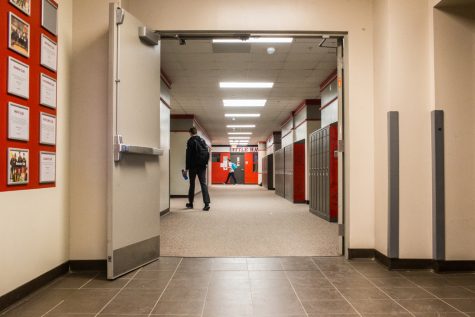Opinion | ‘Returning to normal’ is impossible
The Coronavirus has permanently shattered our already fractured institutions. We cannot go back to the status quo.
Blake Ossian of Washington, Iowa throws a ping pong in a game of beer pong during the tailgate before the Iowa vs. Rutgers game on September 7, 2019.
August 31, 2020
A popular sentiment currently surrounding COVID-19 is the desire for life to just get back to normal. Unfortunately, it is becoming increasingly clear that “pre-pandemic life” will not return anytime soon, even after mitigation of the virus.
Institutions and communities across the state and country showed strain even before the pandemic hit. According to the Census Bureau, nearly 30 million people in the U.S. were uninsured. Additionally, real wages had been stagnant for the last 40 years, according to Pew Research, even as productivity has exploded.
These two points highlight what people have been feeling for quite some time — sickness and exploitation. So, it makes sense that when the coronavirus pandemic hit, the sickness that Americans were feeling got deeper and the exploitation got even more extreme.
Fast forward to the present day, when millions more have lost their jobs, and consequently, the health insurance tied to those jobs. In this way, the pandemic has dramatically sharpened a problem that was untenable to begin with.
We see this over and over when we go through the different areas in which COVID-19 has affected our lives. Take group health disparities, for example. People of color have long experienced discrimination and oppression in the health-care system. This has led to lower levels of access for care, both geographically and financially.
It is therefore unsurprising, yet incredibly saddening, that communities of color have been disproportionately affected by the coronavirus pandemic.
COVID-19 didn’t create these problems. It has simply exacerbated the problems that already exist.
COVID-19 has also hit the working class and the poor harder than other groups. An individual’s income has been a strong predictor of their ability to survive the coronavirus. These group disparities are closely interconnected, as people of color are disproportionately working class.
All this leads me to say that the current problems we are seeing are not unique to the pandemic, but have been made worse by it. It follows that, when the pandemic eventually ends, these problems will not end with it. Americans will not magically get their insurance back, and their now-drained savings accounts will not magically reappear flushed with cash.
According to a paper written by economists for the University of Chicago, more than 40 percent of jobs lost during the pandemic will likely be permanently lost. This is a terrifying number, especially given the fact that, broadly speaking, health care is directly tied to work in this country.
In tandem with these permanent job losses, the gig economy is looking more clearly than ever like the future of work for Americans. A CNN Business article states that “the new normal may usher in a shift away from full-time jobs to side hustles and multiple gigs”.
It goes without saying that a “shift away from full-time jobs” is a recipe for sickness and exploitation, as more and more Americans will be without health care, without a reliable work schedule, and consequently without dignity in their work and in their lives.
The coronavirus pandemic has exposed our broken institutions in the most destructive way possible, and this destruction will last far after it is over.
Columns reflect the opinions of the authors and are not necessarily those of the Editorial Board, The Daily Iowan, or other organizations in which the author may be involved.



















